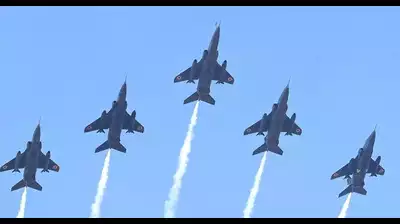Aero India 2025: Artificial Intelligence in aerospace & defence — progress, but with caution | Bengaluru News

Bengaluru: Defence and aerospace companies at Aero India 2025 highlighted AI’s transformative potential in military operations, while acknowledging significant challenges in its implementation for defence applications.
Despite the enthusiasm, industry experts consistently pointed to challenges including data security, infrastructure requirements, and the need for continuous system training. The focus remains on developing secure, offline solutions that can meet stringent military requirements while maintaining operational efficiency. They emphasised the development of offline AI solutions to address security concerns and data handling limitations in military environments.
“Every defence product we develop, we try to incorporate AI, from radar and weapon systems to naval operations. Our AI solutions in signals intelligence and target classification operate offline, ensuring confidentiality in sensitive military communications,” said Jala Jamuna, senior deputy general manager at defence PSU BEL.
The Adani Group demonstrated AI’s force-multiplying capabilities, suggesting that “a force of 100 can operate with just 20 people, and one person can monitor 500 cameras instead of needing 500 operators”. The company also highlighted AI’s role in cybersecurity and threat prediction through digital footprint analysis.
In advanced aerospace applications, Q-Alpha Aerospace director Sanjoy K revealed how AI optimises engine behaviour in hypersonic aircraft, with speeds advancing from Mach 5 to Mach 12 (Mach is the speed with which wind travels). The company is also developing swarm AI capabilities for coordinated unmanned aerial vehicle (UAV) missions.
Deror Bar, president of ELTA Systems, Israel, addressed the critical role of data availability in AI effectiveness. “AI thrives on big data — without it, AI is ineffective. In aerospace, data is often limited, a missile flies for two minutes, an aircraft for two hours. However, in sensor-based domains like radar and electronic intelligence, we generate massive amounts of data every 50 milliseconds, which provides a solid foundation for AI.”
















